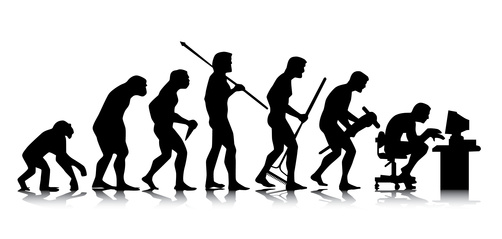
Some people claim evolutionary psychology is a pseudoscience just like any other. No hard evidence, no core observations, no skeletons we could match with others and no DNA analysis that would tell us more about our prehistoric behavior that actually exists to these days.
But putting it on the same level with astrology, creationism, homeopathy, dowsing, or crystal healing?
The real pseudosciences manifest themselves with more than dubious origin, no rational core of why they should work, incompatible branches (and a lot of them), lack of statistical evidence and lack of hard evidence.
But dowsing and crystal healing have no massive supportive scientific (evidence-based) branches that would put a serious ground to it.
Evolutionary psychology can not only be grounded by massive and robust evidence-based evolutionary biology and the very fact that evolution is true (therefore if we evolved, nearly every aspect of our behavior is evolutionary-based), but also by psychology, anthropology, neuroscience, ethology (it is the study of animal behavior in natural environments), sociology and cognitive science.
Definitely, everything is not an adaptation (so as the critics assume, some of them are really fairy tales), but evolutionary psychology behavior explanations are enormously rational, thought-out and seemingly obvious consequences of evolution-made adaptations.
And there are statistics. Common statistical tests include t-tests (it is a statistical test that is used to compare the means of two groups, it is often used in hypothesis testing to determine whether a process or treatment actually has an effect on the population of interest, or whether two groups are different from one another), ANOVAs (analysis tools used in statistics that splits an observed aggregate variability found inside a data set into two parts: systematic factors and random factors; the systematic factors have a statistical influence on the given data set, while the random factors do not), regression analysis (reliable method of identifying which variables have impact on a topic of interest; the process of performing a regression allows you to confidently determine which factors matter most, which factors can be ignored, and how these factors influence each other), and chi-square tests (statistical test used to examine the differences between categorical variables from a random sample in order to judge the goodness of fit between expected and observed results).
Experiments, observations, descriptive statistics (means, standard deviations) and inferential statistics (correlation coefficients, effect sizes) are commonly used. Techniques such as phylogenetic comparative methods and cross-cultural comparisons help researchers assess evolutionary hypotheses by examining patterns of behavior in different contexts.
So evolutionary psychology isn’t a real science, but its findings definitely possess an enormous number of truths that are exceptionally useful and reveal why our ancestors behaved in some way and why we behave the same.
Not only does it reveal why we act the way we act, but furthermore it gives us the opportunity to change such behavior. Associating it with the aforementioned pseudosciences isn’t useful but also unwise.
Leave a Reply